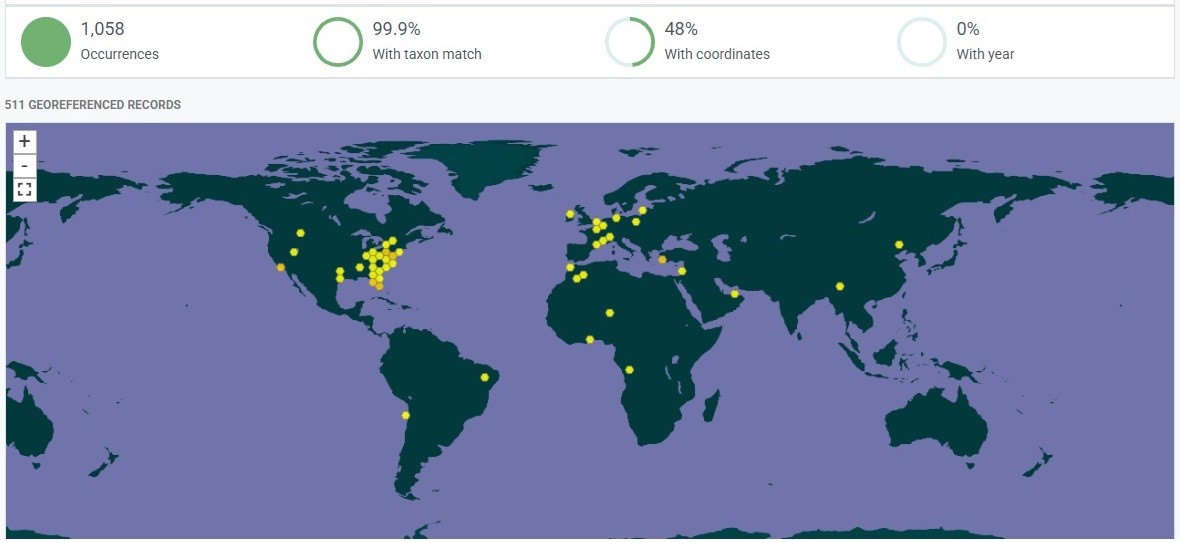As we developed the original website, we had a vision for the myFOSSIL eMuseum (mFeM) to serve our community. This would be a place where members of the FOSSIL community could upload fossil images from their collections. As this began, we found that the images were of inconsistent quality, and thus we developed digital photographic and metadata standards for a “research grade” classification, much the same way that, for example, iNaturalist does with uploads from their community participants.
Essentially, for a specimen to be considered research grade in the mFeM, the image needed to be in focus and contain a scale, usually a ruler. Essential metadata included collector, date uploaded, locality, and geological age. Incoming specimen images and data were curated by a dedicated team of myFOSSIL volunteer curators. This primarily included Glorida Carr, Bill Heim, Samantha Ocon, Christa Speights, and Matthew Speights. 
This GBIF map image shows mFeM specimen locations, retrieved from GBIF on May 5th, 2025. The mFeM database contains 1552 total specimens, of which 1058 are designated as “research grade,” and represented here. In order to be classified as “research grade,” all specimens require a photo and are catalogued using a Darwin Core convention for defining the individual fields within the database. We also developed an API (Application Programming Interface) bridge that connects our research data to global biodiversity databases, including iDigBio and GBIF (also see below).
According to GBIF, as of May 2025, users have cited the mFeM 26 times.
Sustainability and archive of mFeM research grade data and images
The real-time, interactive interface of the myFOSSIL eMuseum (acronym mFeM) is no longer available on the previous web site that was sunsetted in June 2025. Nevertheless, archival copies of the entire set of mFeM research grade specimens are archived as follows:
(1) iDigBio (Integrated Digitized Biomuseum): The myFOSSIL eMuseum is described at https://portal.idigbio.org/portal/recordsets/7232e59b-b0e1-49cd-9632-b8ae1f49f828. For the foreseeable future, the archived mFeM research grade specimens can be accessed here, or at GBIF, the other global aggregator listed below.
(2) GBIF (Global Biodiversity Information Facility): GBIF aggregates the mFeM data from iDigBio at https://www.gbif.org/dataset/b364710b-3f07-4876-a554-1943b702363f. For the foreseeable future, the archived mFeM research grade specimens can be accessed here, or at iDigBio, the other global aggregator listed above.
(3) A complete Excel file downloaded of all 1058 specimens from GBIF is available below. This file contains specimen image data and metadata, but not the associated digital images themselves. If access to the mFeM digital images is desired, and no longer available through the above sources, contact fossil@flmnh.ufl.edu.